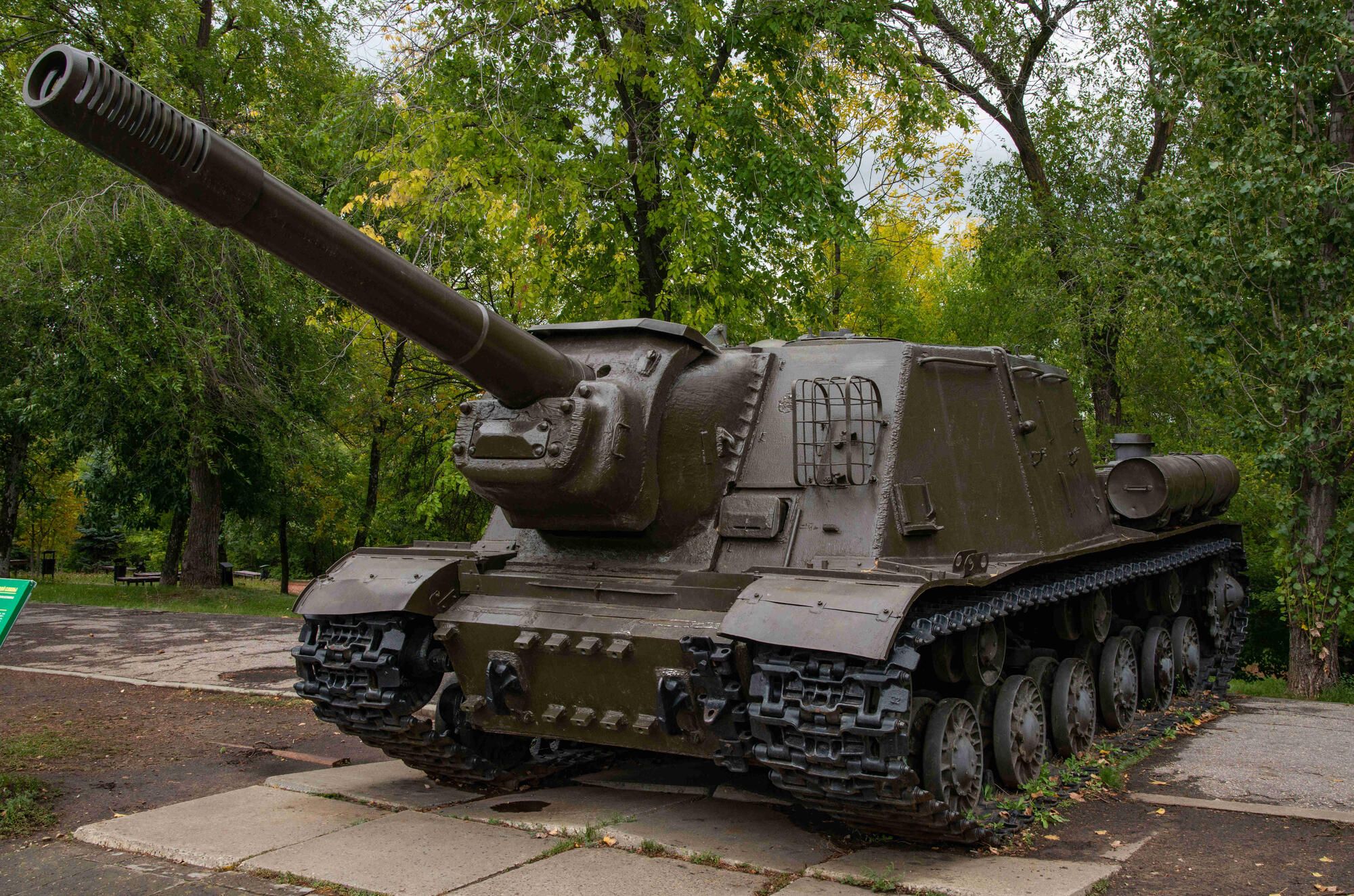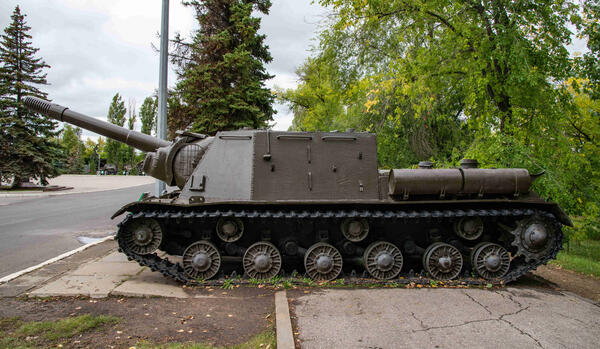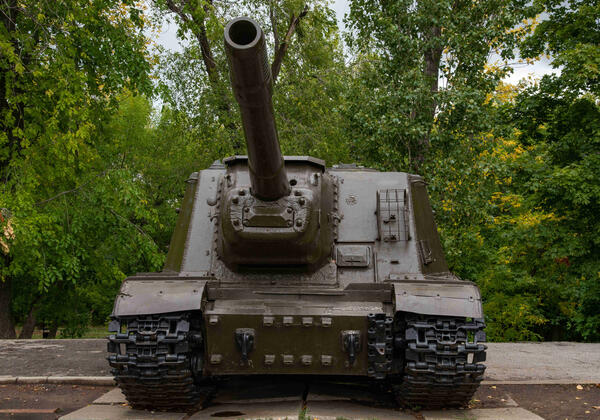The ISU-152 heavy self-propelled artillery vehicle was designed in 1943 on the basis of the IS-2 heavy tank and the SU-152 self-propelled artillery howitzer, which distinguished itself during the Battle of Kursk. This artillery weapon was developed in the Design Bureau of Plant No. 100 in Chelyabinsk with the participation of Joseph Yakovlevich Kotin and Grigory Nikolaevich Moskvitin.
The ISU-152 was equipped with a 152.4mm ML-20S gun-howitzer. During the war, 3533 such guns were produced for self-propelled vehicles. The hull of the vehicle was a rigid armored box made of rolled armor plates.
The weapon was used to eliminate long-term firing points and enemy combat armored vehicles. Heavy self-propelled guns were intended for destroying field and long-term fortifications, engaging tanks at long distances, and supporting infantry and tanks during offensive operations.
The ISU-152 could hit any type of tanks and self-propelled guns of the Wehrmacht. The thickness of the frontal armor was about 90 mm. Such armor on the self-propelled gun allowed it to occupy firing positions that were inaccessible to towed artillery, and hit the target with direct fire.
This self-propelled artillery vehicle proved itself under enemy fire. Its maintenance was easy. In combat operations on the fronts of the Great Patriotic War, the ISU-152 began to be used in 1944. The self-propelled guns on the ISU-152 were credited, among other factors, with the success in the capture of Konigsberg and Berlin.
They fired their last salvos in World War II at the other end of the Eurasian continent during the operation to defeat the Japanese Kwantung army. They were mass-produced mainly at the Kirov Plant in Chelyabinsk until 1947.
After the Second World War, the ISU-152 self-propelled guns were used in armed conflicts several times. These vehicles participated in the events of the Hungarian Revolution of 1956, and in Egypt they served as fixed firing points along the banks of the Suez Canal.
In total, about 3 thousand units were manufactured. The vehicle was modernized in the 1950s and remained in service with the Soviet Army for several decades.
The ISU-152 was equipped with a 152.4mm ML-20S gun-howitzer. During the war, 3533 such guns were produced for self-propelled vehicles. The hull of the vehicle was a rigid armored box made of rolled armor plates.
The weapon was used to eliminate long-term firing points and enemy combat armored vehicles. Heavy self-propelled guns were intended for destroying field and long-term fortifications, engaging tanks at long distances, and supporting infantry and tanks during offensive operations.
The ISU-152 could hit any type of tanks and self-propelled guns of the Wehrmacht. The thickness of the frontal armor was about 90 mm. Such armor on the self-propelled gun allowed it to occupy firing positions that were inaccessible to towed artillery, and hit the target with direct fire.
This self-propelled artillery vehicle proved itself under enemy fire. Its maintenance was easy. In combat operations on the fronts of the Great Patriotic War, the ISU-152 began to be used in 1944. The self-propelled guns on the ISU-152 were credited, among other factors, with the success in the capture of Konigsberg and Berlin.
They fired their last salvos in World War II at the other end of the Eurasian continent during the operation to defeat the Japanese Kwantung army. They were mass-produced mainly at the Kirov Plant in Chelyabinsk until 1947.
After the Second World War, the ISU-152 self-propelled guns were used in armed conflicts several times. These vehicles participated in the events of the Hungarian Revolution of 1956, and in Egypt they served as fixed firing points along the banks of the Suez Canal.
In total, about 3 thousand units were manufactured. The vehicle was modernized in the 1950s and remained in service with the Soviet Army for several decades.





